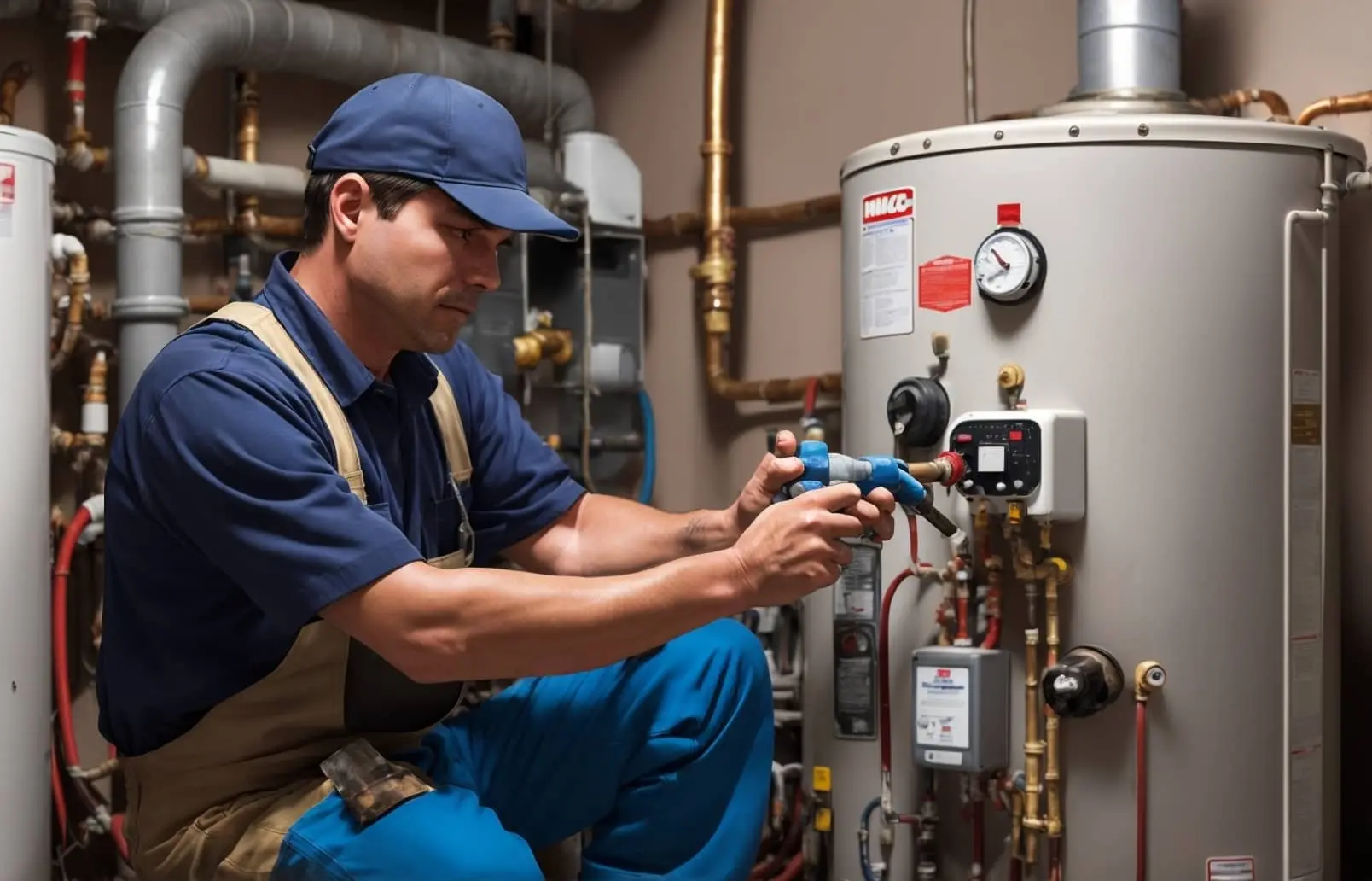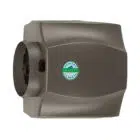
Table of Contents
- Why is My Hot Water Tank Leaking From the Bottom: Top 5 Reasons
- Step-by-step Instructions on How to Solve the Water Tank Leaking Problem
- Consequences of Ignoring the Problem of Leaking Water Heater
- Should I Call for a Professional Help?
- Regular Maintenance as a Key to Prevent Water Heater Issues
- Conclusion
Picture this: you step into the shower, eagerly anticipating a soothing cascade of warm water, only to be met with a shiver-inducing surprise — a water heater leaking from the bottom! It’s undeniably one of the most frustrating household headaches. But fret not! In this guide, we will explore the reasons behind this problem, highlight the consequences of ignoring it, and discuss potential solutions how to eliminate the issue.
Why is My Hot Water Tank Leaking From the Bottom: Top 5 Reasons
Your hot water tank is an essential appliance in your home. It’s responsible for providing you with the comforting warmth of hot water for showers, baths, and daily chores. However, when you notice water pooling around the base of your water heater, it’s a clear indication that something is amiss.
So why is your hot water tank leaking from the bottom?
A water heater leaking from the bottom can occur due to several reasons, and it’s essential to understand them to address the issue properly.
- Corrosion: Over time, the metal tank of your water heater can corrode, especially if you have hard water. This corrosion can create tiny holes at the bottom of the tank, leading to leaks.
- Sediment Buildup: Sediment, minerals, and debris can accumulate at the bottom of your hot water tank. As these materials accumulate, they can create pressure and cause cracks or fissures in the tank, resulting in leaks.
- Faulty Pressure Relief Valve: The temperature and pressure relief valve is a crucial safety component of your water heater. If it’s malfunctioning or releasing excess pressure, it can cause water to leak from the bottom.
- Loose Drain Valve: The drain valve at the bottom of the tank is used for periodic flushing. If it’s loose or damaged, it can lead to water leakage.
- Corroded or Faulty Inlet/Outlet Connections: The inlet and outlet connections on your water heater can also be a source of leaks. Corrosion or loose fittings can result in water escaping from these points.
Detecting the reason why your water heater might be leaking from the bottom is the first step in resolving this frustrating issue. With these insights into the common culprits behind leaks, we’ll guide you through the process of troubleshooting and finding the right solution to get your hot water flowing smoothly once again. Contact us if you need a piece of professional advice in detecting the issue.
Step-by-step Instructions on How to Solve the Water Tank Leaking Problem

Before you reach for the phone to call in the professionals, let’s explore some do-it-yourself troubleshooting steps to get to the root of your hot water tank leaking problem. These steps can help you identify common issues and potentially save you time and money.
Step 1: Turn Off Power and Gas Supply Safety first!
To begin troubleshooting, turn off the power supply to your water heater. If your unit is gas-powered, also turn off the gas supply. This precaution ensures your safety while inspecting the unit.
Step 2: Check for Visible Damage
Grab a flashlight and carefully inspect the area around the bottom of your water heater. Look for any visible signs of damage, rust, or water droplets. Pay close attention to the base of the tank, the pressure relief valve, and the inlet/outlet connections. If you spot any suspicious areas, make a note of them for further investigation.
Step 3: Test the Pressure Relief Valve
The temperature and pressure relief valve is a critical safety component of your water heater. To test it, lift the valve’s lever gently. You should hear a rush of air or see some water discharge. If the valve doesn’t release pressure, it may be faulty and in need of replacement. Remember to use caution during this step, as hot water may escape.
Step 4: Inspect the Drain Valve
Ensure the drain valve at the bottom of the tank is tightly closed. If it’s loose or damaged, it can lead to water leakage. A simple tightening of the valve may resolve the issue, but if it’s still leaking, consider replacing it.
Step 5: Drain and Flush the Tank
If you suspect sediment buildup, draining and flushing your water heater can be an effective solution. Follow these steps:
- Connect a hose to the drain valve.
- Place the other end of the hose in a safe drainage area, like a floor drain or outside.
- Open the drain valve and allow the water to flow out.
- You may notice sediment coming out with the water. Continue draining until the water runs clear.
- Close the drain valve, remove the hose, and turn the water supply and power back on.
If you continue to experience leaks or have any doubts about the condition of your water heater, it’s crucial to remember that professional help is just a call away.
Check out the main reasons why the water heater is not working and the ways to solve it with ease.
Consequences of Ignoring the Problem of Leaking Water Heater
Ignoring a water heater leaking from the bottom is like ignoring a leak in your lifeboat while sailing through stormy waters. The consequences can be both immediate and long-term, affecting your home, your health, and your wallet. Let’s delve into what could happen if you overlook this pressing problem.
Water Damage: The most immediate consequence of neglecting a water tank leaking is water damage. The water will continue to escape, potentially flooding your utility room or basement. It can seep into your walls, ceilings, and floors, causing structural damage and requiring costly repairs.
Mold Growth: Accumulated moisture from a leaking water heater creates the perfect breeding ground for mold and mildew. These unsightly invaders not only damage your home further but also pose health risks, particularly for those with allergies or respiratory conditions.
Reduced Efficiency: A leaking water heater is an inefficient one. The constant loss of hot water means your heater has to work overtime to meet your demands. This results in higher energy bills and a shorter lifespan for your appliance, ultimately costing you more in the long run.
Water damage, mold growth, and reduced efficiency are just the tip of the iceberg. Addressing the issue promptly is essential to safeguard your home and your family’s well-being.
Should I Call for a Professional Help?
When it comes to dealing with a water heater that’s sprung a leak, sometimes the best decision you can make is to bring in the professionals. At HVAC Service Solutions, we understand that these situations can be stressful, but our goal is to make it as easy as possible for you.
Professional help is essential because it ensures not just a quick fix, but a lasting solution. Our experienced technicians know water heaters inside and out. They can pinpoint the exact cause of the leak, ensuring it doesn’t come back to haunt you. Plus, we handle all repairs with safety and compliance in mind, giving you peace of mind in knowing your home is in good hands.
So, while it might be tempting to DIY your water heater woes, remember that we’re here to help. HVAC Service Solutions is dedicated to keeping your home comfortable and hassle-free. Reach out to us, and we’ll take care of your water heater issues, so you can get back to enjoying your hot showers and worry-free living.
Find out more about how the water heater repair process works via the link below.
Regular Maintenance as a Key to Prevent Water Heater Issues

Regular maintenance of your water heater might seem like a minor chore, but it can save you from major headaches down the road. By investing a little time and effort now, you can prevent costly repairs and ensure your hot water supply remains reliable. Here are five essential tips to keep your water heater in top shape.
- Regular Flushing: Sediment buildup is a common culprit behind water heater issues. To combat this, schedule regular flushing of your tank. This process helps remove accumulated sediment, improving efficiency and extending the lifespan of your water heater.
- Annual Inspections: Consider arranging annual inspections by HVAC Service Solutions professionals. Our experts can identify potential problems early, allowing for timely repairs and preventing more significant issues from developing.
- Install a Water Softener: If you live in an area with hard water, consider installing a water softener. Hard water can accelerate corrosion and sediment buildup in your water heater. A water softener can help extend the life of your appliance.
- Temperature Adjustment: Check and adjust your water heater’s temperature setting to a safe and efficient level. This not only prevents scalding but also reduces energy consumption, saving you money.
- Visual Inspections: Periodically inspect your water heater for signs of leaks, rust, or corrosion. Catching these issues early can prevent more extensive damage and costly repairs.
Preventative maintenance is the key to ensuring your water heater continues to provide reliable hot water while avoiding unexpected disruptions. At HVAC Service Solutions, we’re here to assist you in this effort. Our professional water heater maintenance services are designed to make your life easier. Don’t hesitate to reach out to us to schedule routine maintenance and enjoy the peace of mind that comes with a well-maintained water heater.
Conclusion
In the realm of home comfort, hot water is an essential component, and when a hot water heater not working, it’s vital to approach solutions with expertise and caution. DIY attempts can lead to further complications or safety risks. By recognizing the value of professional HVAC repair, you can ensure the longevity and efficiency of your hot water heater.
With HVAC Service Solutions by your side, you can trust that your hot water heater will receive the expert care it deserves, keeping your household warm and comfortable throughout the year.
Share


















